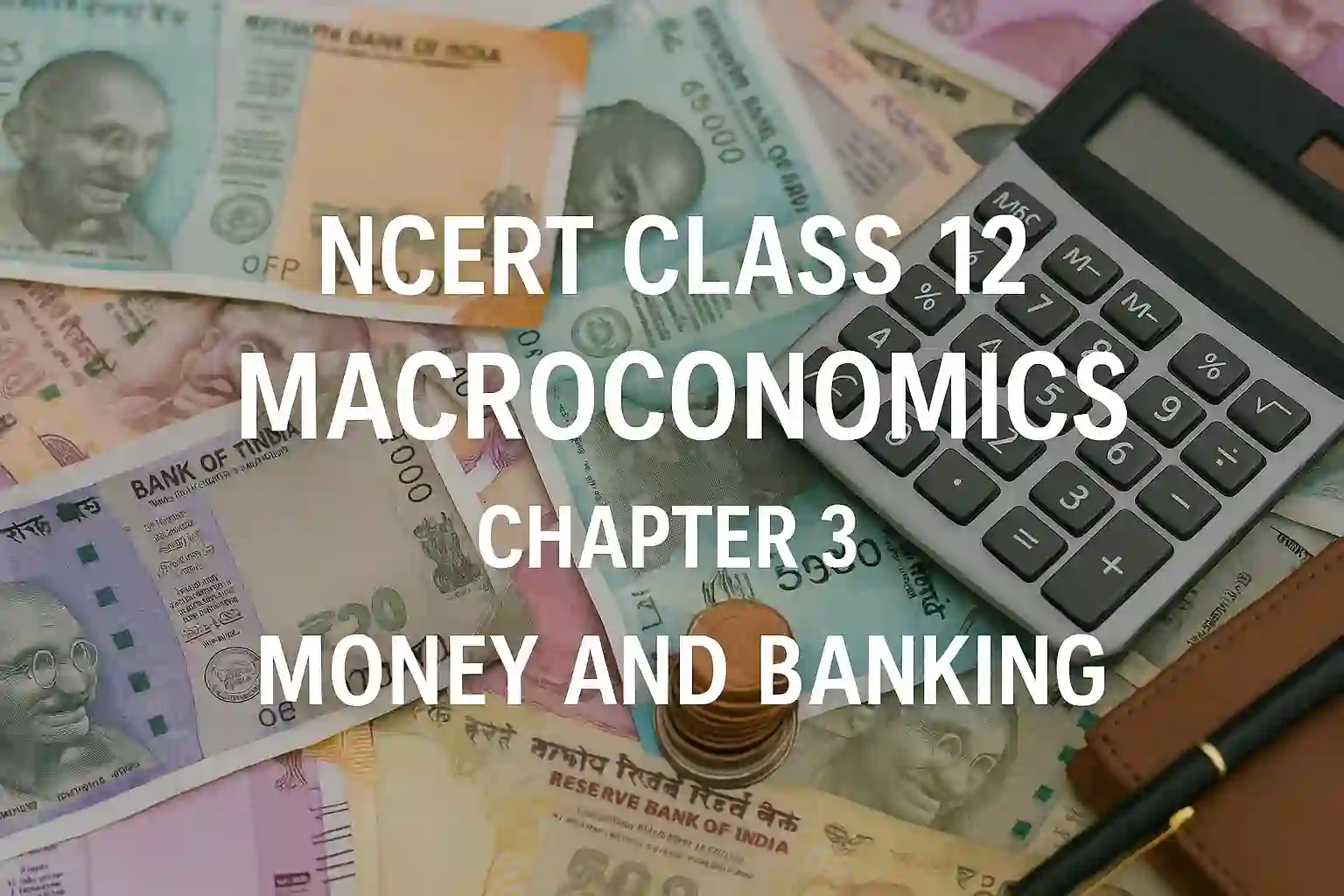Chapter 3 of NCERT Class 12 Macroeconomics is titled Money and Banking. This chapter explains the concept of money, how it evolved, and how the banking system—especially the central bank—plays a key role in controlling money supply and maintaining economic stability. It also explains the credit creation process by commercial banks and introduces important tools used by the Reserve Bank of India (RBI) like repo rate, reverse repo rate, CRR, SLR and open market operations.
I decided to write this article because students often get confused between theoretical definitions and real-world banking practices. Terms like money supply, legal tender, and monetary policy can seem complicated if not explained with proper examples. But this chapter has real-life value too—it helps students understand how interest rates are changed, how inflation is controlled, and how the RBI steps in during financial crises. That’s why I’m sharing a simple explanation of the chapter along with the official link to download the NCERT PDF, so students can study from a reliable and updated source.
What is Money?
Money is anything that is generally accepted as a medium of exchange. In earlier times, people used the barter system where goods were exchanged directly. But barter had many limitations like lack of double coincidence of wants and difficulty in storing value. So, money came into use.
Functions of money include:
- Medium of exchange
- Unit of account
- Store of value
- Standard of deferred payment
Today, money is not just coins and notes. It also includes demand deposits and digital forms of payment.
Banking System in India
The Indian banking system mainly includes two types of banks:
- Commercial Banks – These accept deposits from the public and give loans. They play a major role in credit creation.
- Central Bank (RBI) – This is the apex institution that controls and regulates the entire banking system.
Role of Commercial Banks
Commercial banks create credit by accepting deposits and lending a part of it. Suppose a bank gets ₹1,000 and keeps ₹100 as CRR (cash reserve ratio), it can lend ₹900. The borrower uses that ₹900 which again comes back into the system as deposits, allowing the bank to lend more. This is called the credit multiplier effect.
Role of the Reserve Bank of India (RBI)
RBI is the central bank of India. Its key functions include:
- Printing currency
- Controlling inflation
- Managing foreign exchange
- Regulating commercial banks
- Maintaining financial stability
Monetary policy tools used by RBI:
| Tool | Purpose |
|---|---|
| CRR (Cash Reserve Ratio) | % of deposits banks must keep with RBI |
| SLR (Statutory Liquidity Ratio) | % of deposits to be kept in liquid form |
| Repo Rate | Rate at which RBI lends money to banks |
| Reverse Repo Rate | Rate at which RBI borrows money from banks |
| Open Market Operations | Buying/selling govt securities to control money flow |
These tools help the RBI control the supply of money in the economy and manage inflation or recession.
Real-Life Examples from the Chapter
- When RBI increases repo rate, loans become expensive. This helps reduce inflation.
- During the COVID-19 lockdown, RBI reduced repo rate to encourage borrowing and investment.
- If inflation is rising too fast, RBI may increase CRR so that banks lend less.
These examples show how closely banking is linked to daily life and government policy.
Download NCERT Class 12 Macroeconomics Chapter 3 PDF
You can access the official NCERT Class 12 Macroeconomics PDF of Chapter 3: Money and Banking directly from the NCERT website. This version is updated as per the CBSE syllabus and is completely free to download.



















